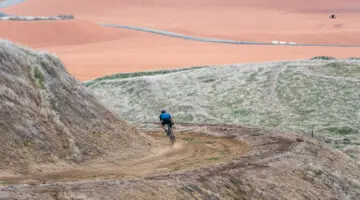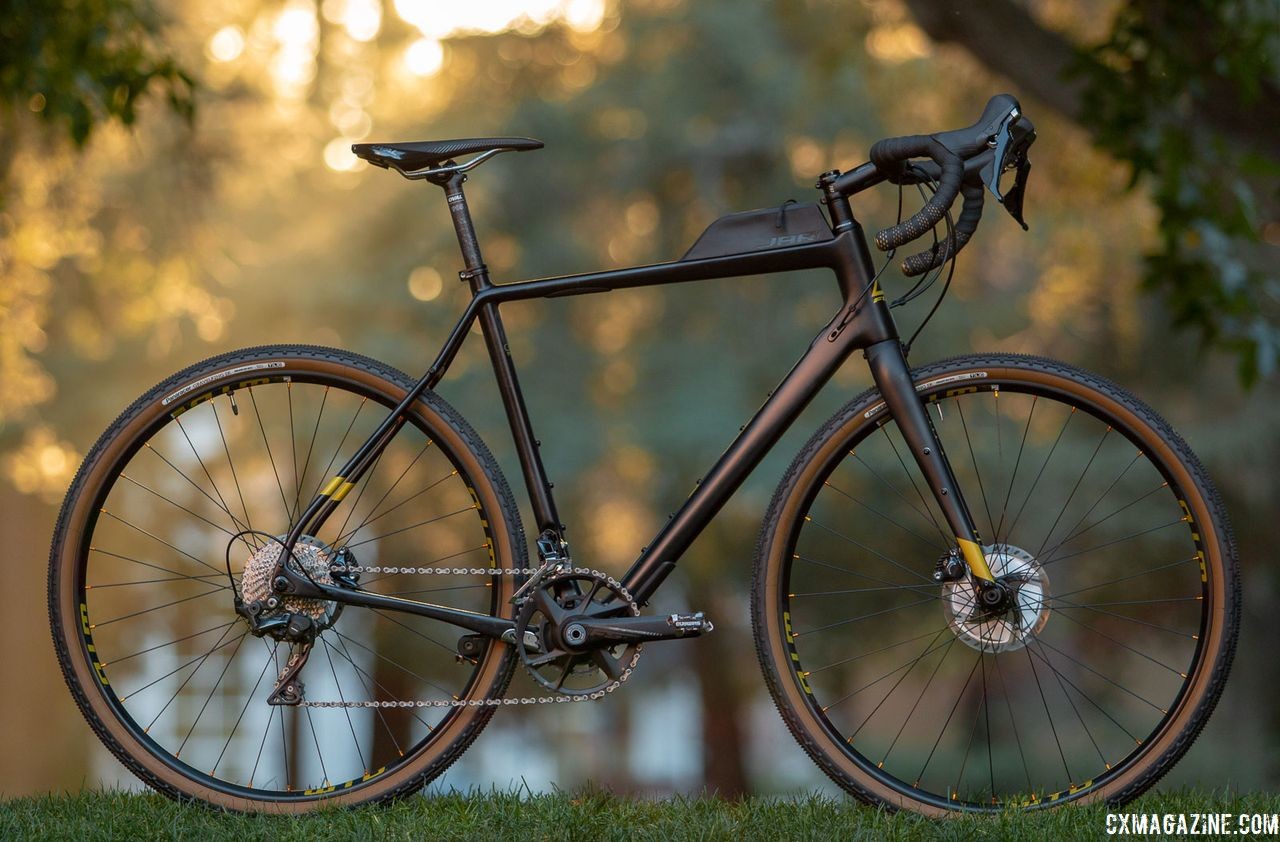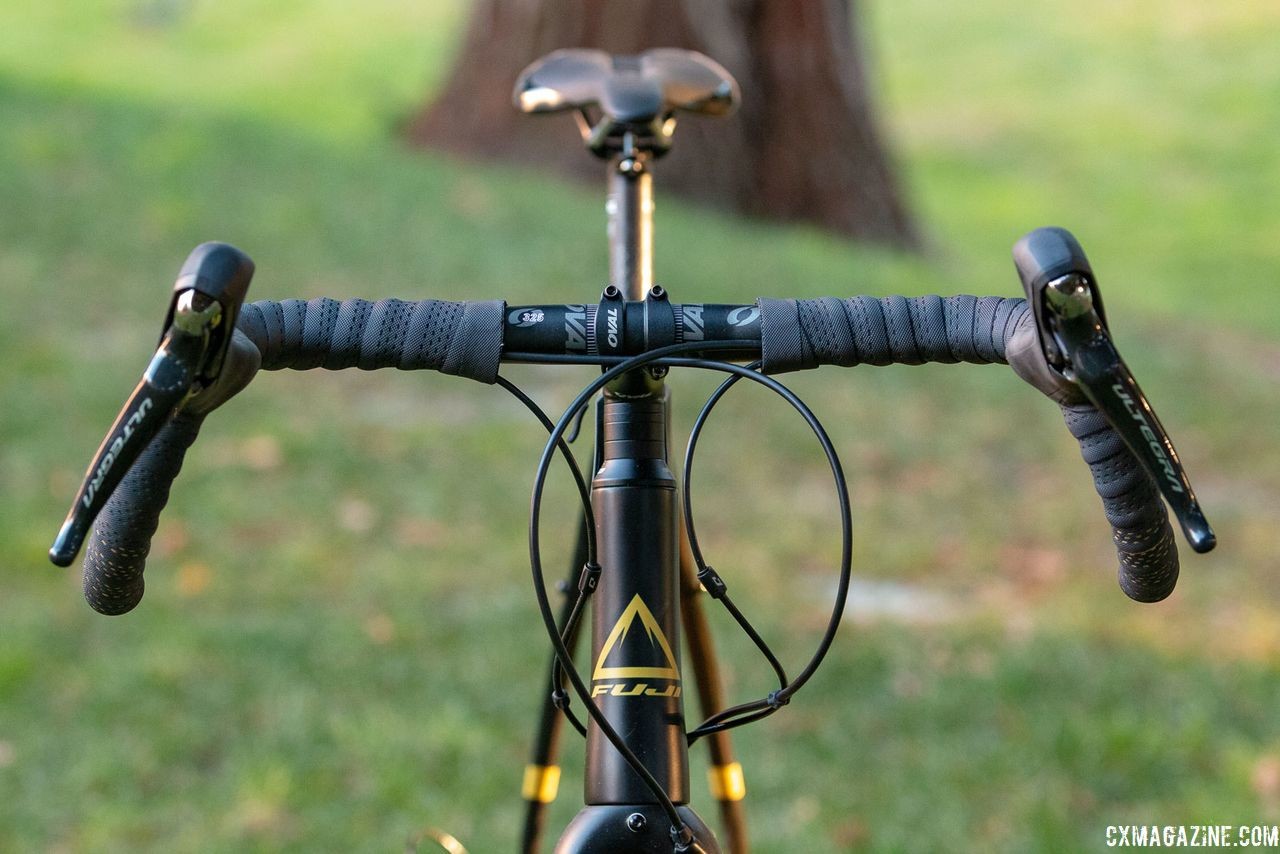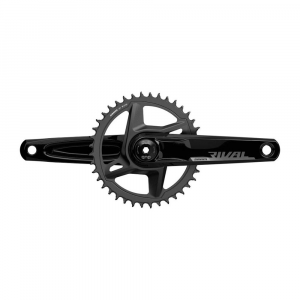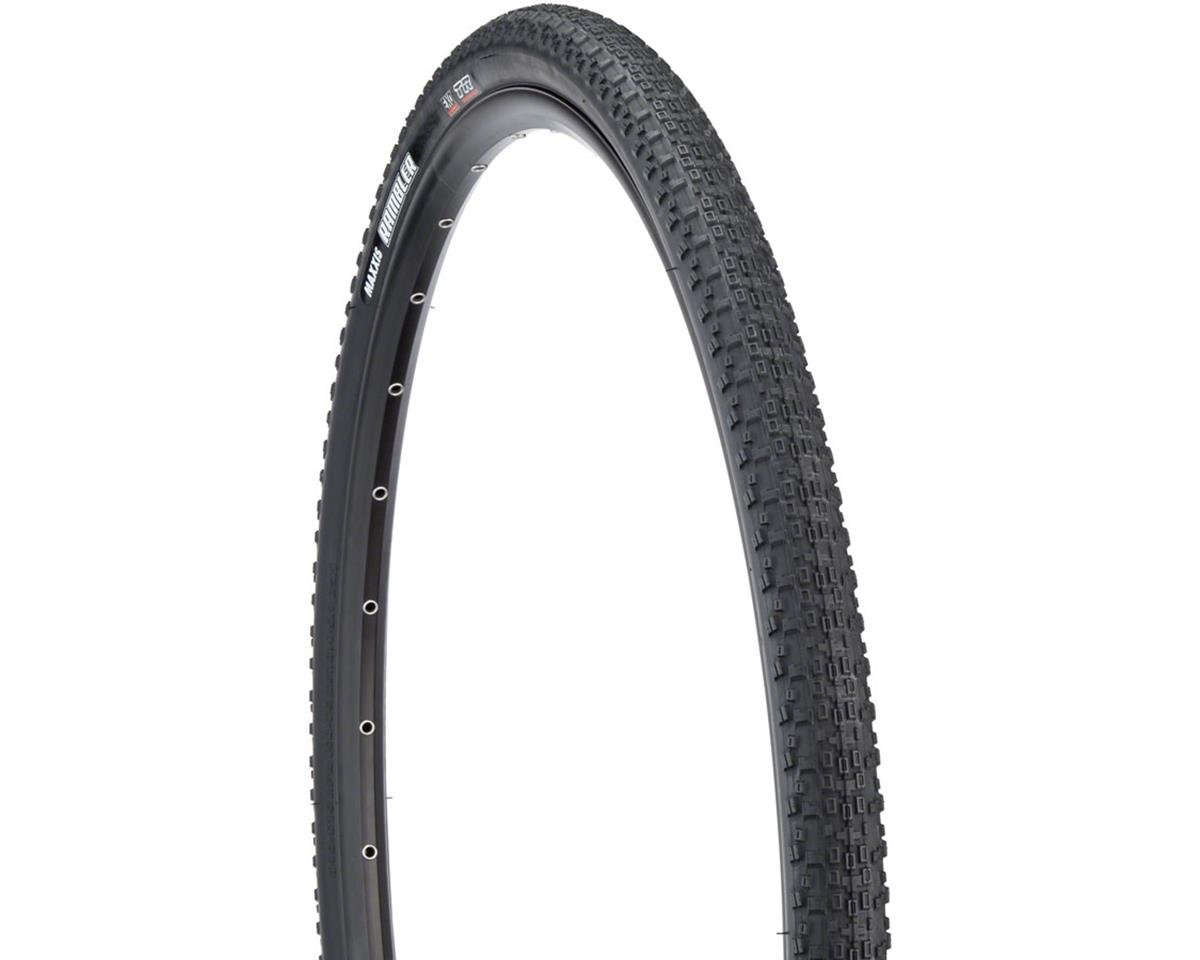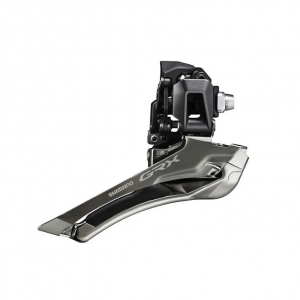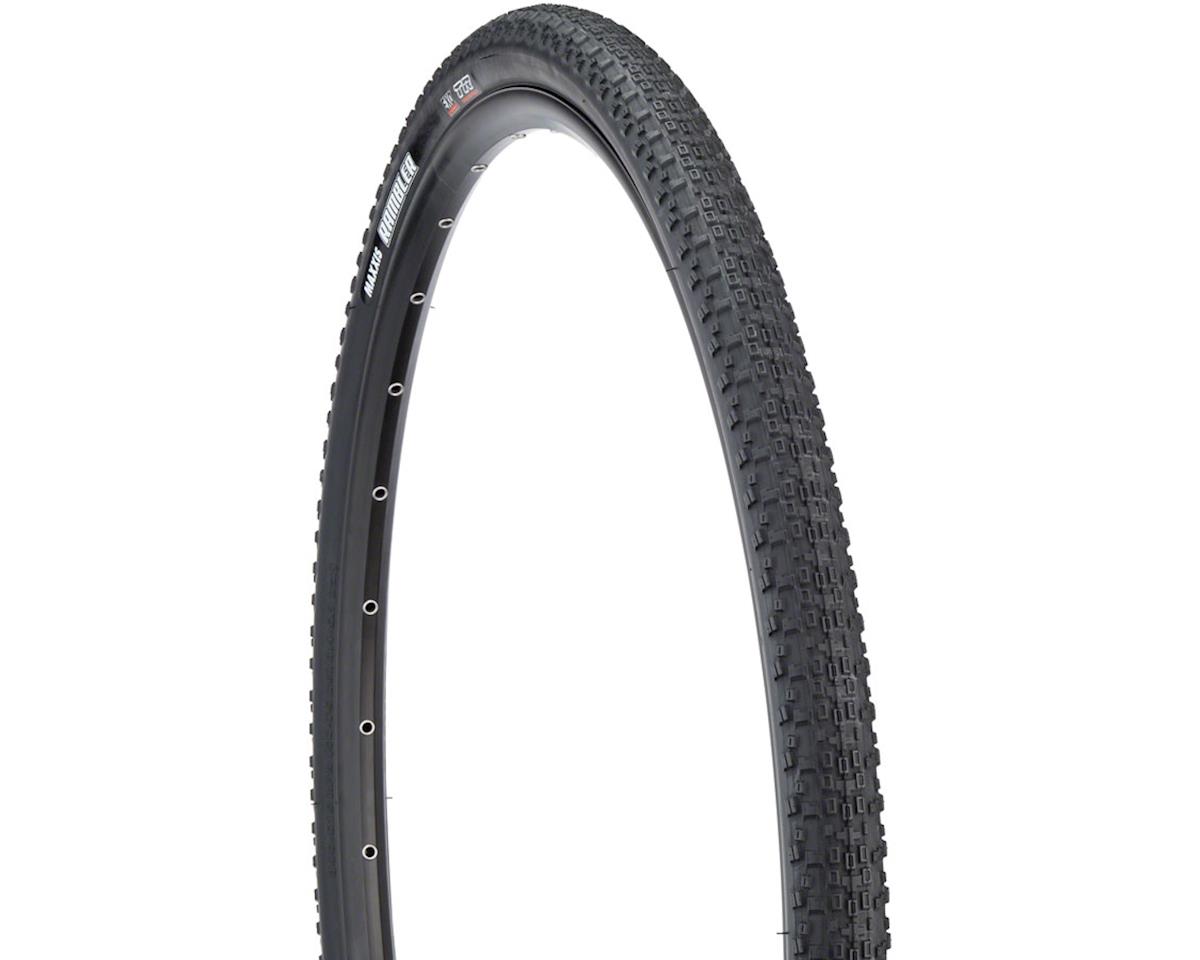by Lee Slone
In 2016, Fuji released its first-ever gravel bike, the Jari (pronounced JAR-ee), at Sea Otter 2016. To say that Fuji was new to the off-road scene, however, would not be true.
Fuji has a history in off-road racing, including sponsorship of four-time national champion Jonathan Page from 2013 through early 2017. Decades before that, the company supplied titanium cyclocross frames to legend Paul Curley.
In 2018, the brand returned to the forefront of competitive cyclocross to sponsor Jeremy Powers during his final season. Powers also put some time in on the company’s Jari gravel bike before announcing his retirement at some gravel races this spring. While the bankruptcy of parent company ASI put the brand’s future in jeopardy, it’s back under new ownership and ready to compete for gravel bike market share.
Initially offered in a steel or aluminum frame with braze-ons for all occasions, the first Jari was a budget-friendly entry that sought to serve gravel racers and touring riders alike. Fuji has now updated the Jari frameset with a high-end Fuji Jari Carbon 1.1 model.
We took a first look at the Jari Carbon 1.1 when we received our review bike, and today, we have a full review after putting it to the test over several months of mixed-terrain riding. Find out if it is ready for your next adventure on gravel roads and beyond.
The Frame
The Jari Carbon 1.1 has a strong family resemblance to the alloy Jari introduced back in 2016, but it has been given a carbon overhaul. Fuji builds the frame with its C15 high-modulus carbon for a lightweight ride.
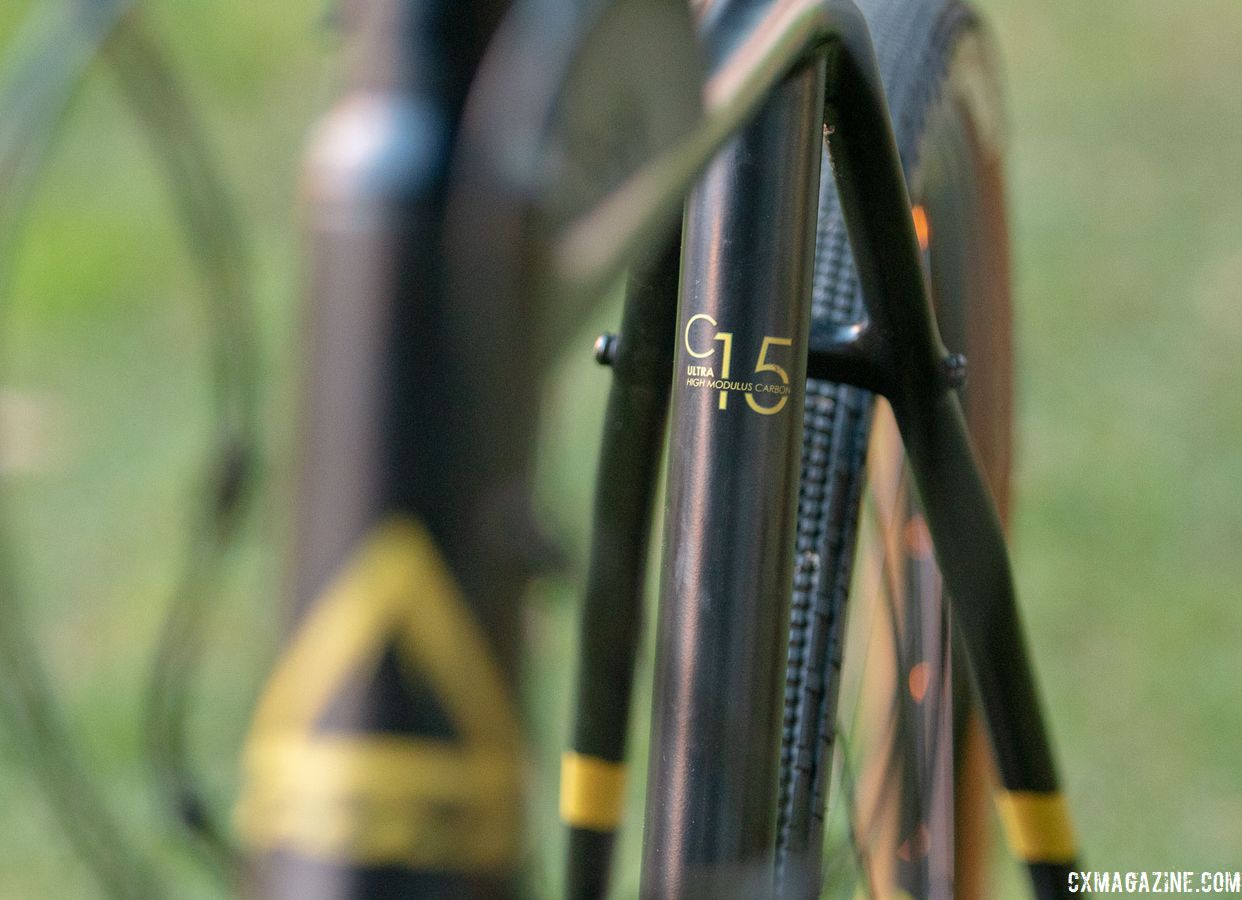
The Jari Carbon is built using Fuji’s high-end C15 carbon recipe. 2019 Fuji Jari Carbon 1.1 Gravel bike. © Cyclocross Magazine
The frame features a number of threaded bosses for bottles, racks and fenders, and the overall geometry is similar to its alloy predecessor. However, at 950g (claimed frame weight), the Jari Carbon drops some weight while taking on a new character.
Fuji was able to get a bit more expressive with the tube shaping on the carbon frame. The down tube transitions to a beefy square-section shape as it meets the head tube, and the top tube is flattened on the top and bottom. The chainstays have some creative shaping, becoming thinner in the middle, to add compliance.
The frame and fork are finished in a satin black with matte gold decals. The black and gold theme is carried through the build as well, with matching decals on the WTB wheelset, and perforated bicolor bar tape with hints of gold showing through. There are even gold-anodized spoke nipples, a stem cap bolt, and bar-end plugs to finish it off. Aesthetically, the package looks more like it’s filled with aftermarket upgrades rather than a stock bike.
Like many modern bikes, cables are routed internally for a clean look. The system works well, as there was no rattling during our testing. The cables can be accessed through removable panels on the top of the down tube and the bottom of the bottom bracket area.
While we didn’t re-cable the bike during our test, these two traits bode well for a relatively hassle-free experience by internally routed cable standards. The look is very clean, with the rear derailleur cable and rear brake hose exiting the chainstays right where they need to.
Fuji’s Altamira cyclocross bike (see our review here) has an old-school BB drop of 53-57cm depending on size. The Jari Carbon has a much lower bottom bracket, with a drop of 67mm in all but one frame size (69mm on the 49cm frame).
Is this aggressively low? Compared to Fuji’s cyclocross offerings, it might be, but compared to other gravel and cyclocross bikes, the Jari sits in the middle, if not a tad high. Factor in the higher volume tires and you’re closer to the cyclocross bike than the numbers might suggest.
The head and seat tube angles are not excessively slack, with 73-degree seat tube and 72-degree head tube angles on our 56cm review frame. Those angles are the same as Fuji’s Cross frame and similar to the higher-end Altamira.
The Jari Carbon 1.1 has a higher head tube than the Altamira, and combined with the lower bottom bracket gives a shorter reach and higher stack for a given frame size. Our 56cm review frame has a stack of 59.2cm and a reach of 37.9cm.
A bigger difference to the ’cross fan might be in the back, where the Jari Carbon’s rather lengthy 43.5cm chainstays. This might disappoint a ’crosser used to a tight-turning machine made to go through switchbacks in the tape, but you can’t review a bike just by looking at a geo chart.
The chainstays are flattened in the middle to provide compliance, and the longer length helps contribute to the healthy tire clearance. The included 700c x 43mm tires fit with plenty of room to spare.
Fuji claims maximum clearance for 700c x 47mm or 650b x 2.2″ tires. This is a good amount of room, but maybe not quite as much as bikes such as the Chumba Terlingua we recently reviewed. If you are trying to cram wider rubber in, the clearance issues are likely to occur at the fork, not the frame, thanks to the former’s sloping crown shape.
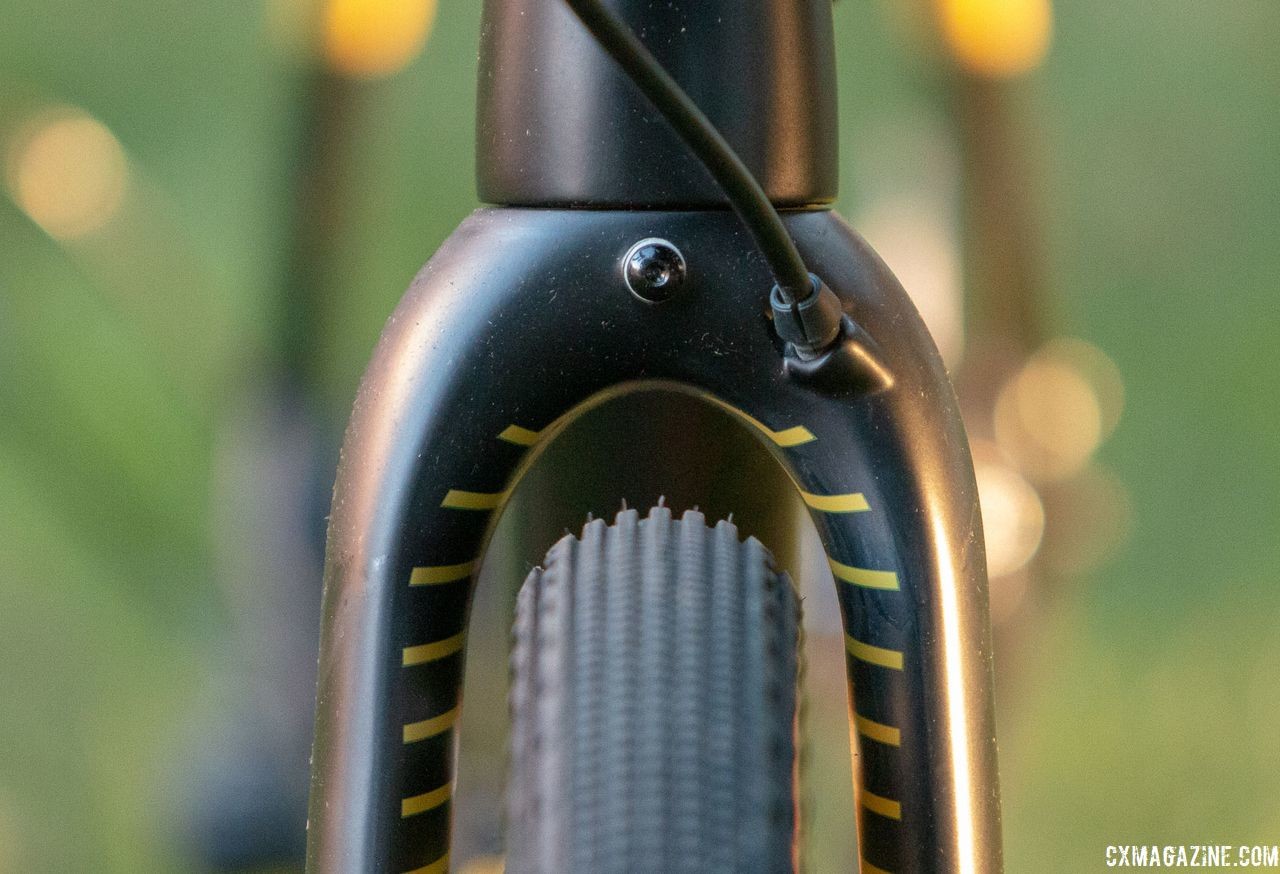
Clearance around the 43mm tire looks a bit tight, so fenders and high volume rubber may be a decision rather than a combination. 2019 Fuji Jari Carbon 1.1 Gravel bike. © Cyclocross Magazine
The Build
While many gravel/adventure bikes have been following the footsteps of their cyclocross brethren in offering 1x drivetrains, on longer rides, some miss the wide range and tighter spacing of cogs provided by a double.
Fuji shipped our Jari Carbon 1.1 with a 2x Shimano drivetrain. The front has an “adventure” 46/30t chainring combo with a mechanical Ultegra FD-R8000 derailleur. Although Shimano has now released the GRX gravel groupset, the Jari Carbon 1.1 avoids a bouncing chain with the Ultegra RD-RX800 clutch derailleur in the rear.
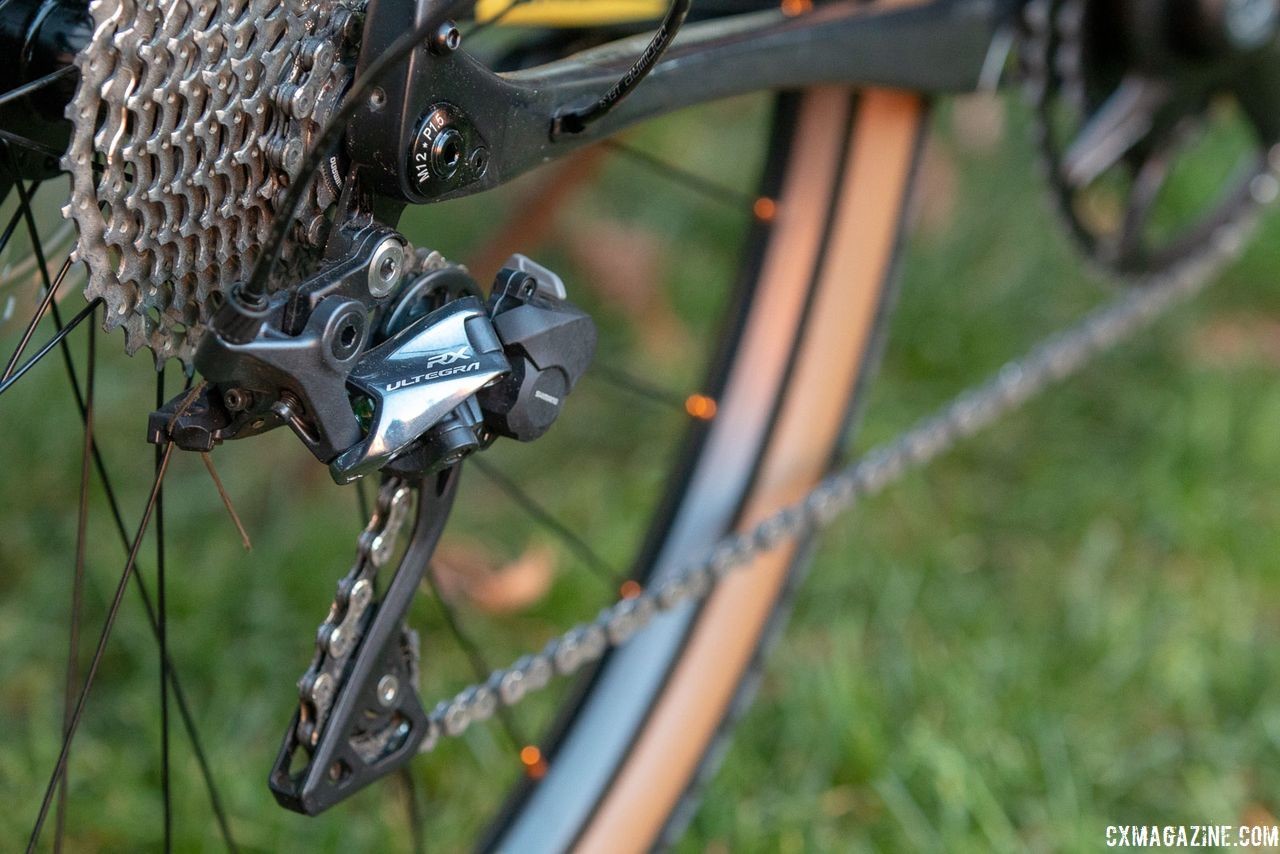
New for 2018, the Shimano RX800 derailleur features a clutch to prevent chain detensioning over rough terrain. 2019 Fuji Jari Carbon 1.1 Gravel bike. © Cyclocross Magazine
The adventure chain ring combo on the FSA Energy Modular crankset paired with the 11-34t Ultegra cassette gives a slightly lower climbing gear than a 1 x 11 drivetrain with a 40t ring and 11-42t cassette. It’s identical gearing to the double Shimano GRX RX600 group just released, with parts available today.
Stock wheels on our Jari Carbon 1.1 were alloy WTB i23 Light KOM tubeless clinchers. The wheels had a wide 23mm internal width, making them decidedly gravel-oriented.
Panaracer GravelKing SK TLR tires in 700c x 43mm were mounted to the wide rims. The tires are tubeless-ready out of the box, and they fit comfortably with the wide clearance of the Jari frame and fork.
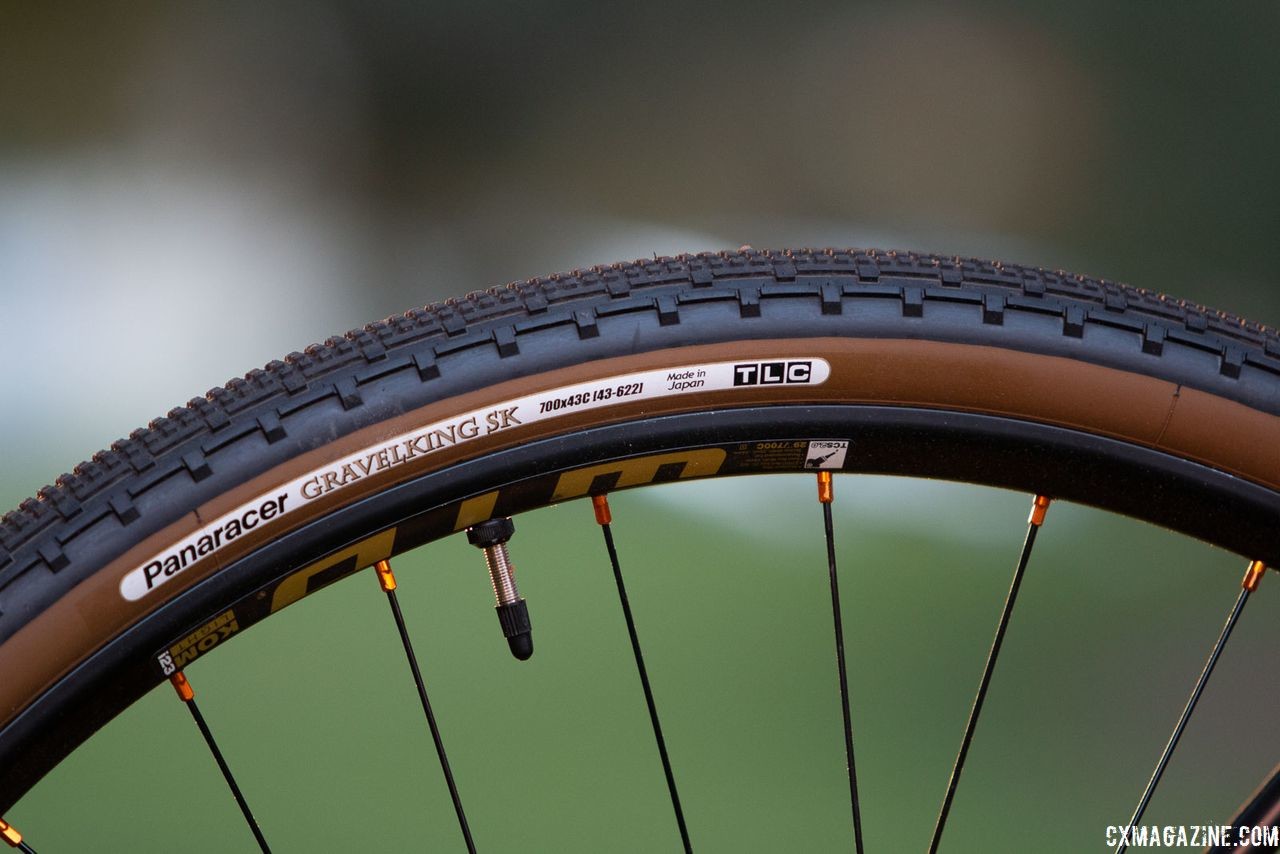
The Jari ships with Panaracer tubeless-ready tires and WTB tubeless rims. 2019 Fuji Jari Carbon 1.1 Gravel bike. © Cyclocross Magazine
Most bikes that come with house-brand cockpit parts aren’t going to contain too many surprises, but their house-brand Oval Concepts 235 flared drop bar stood out. The bar had an aggressive flair that paired well with the Shimano hoods and levers.
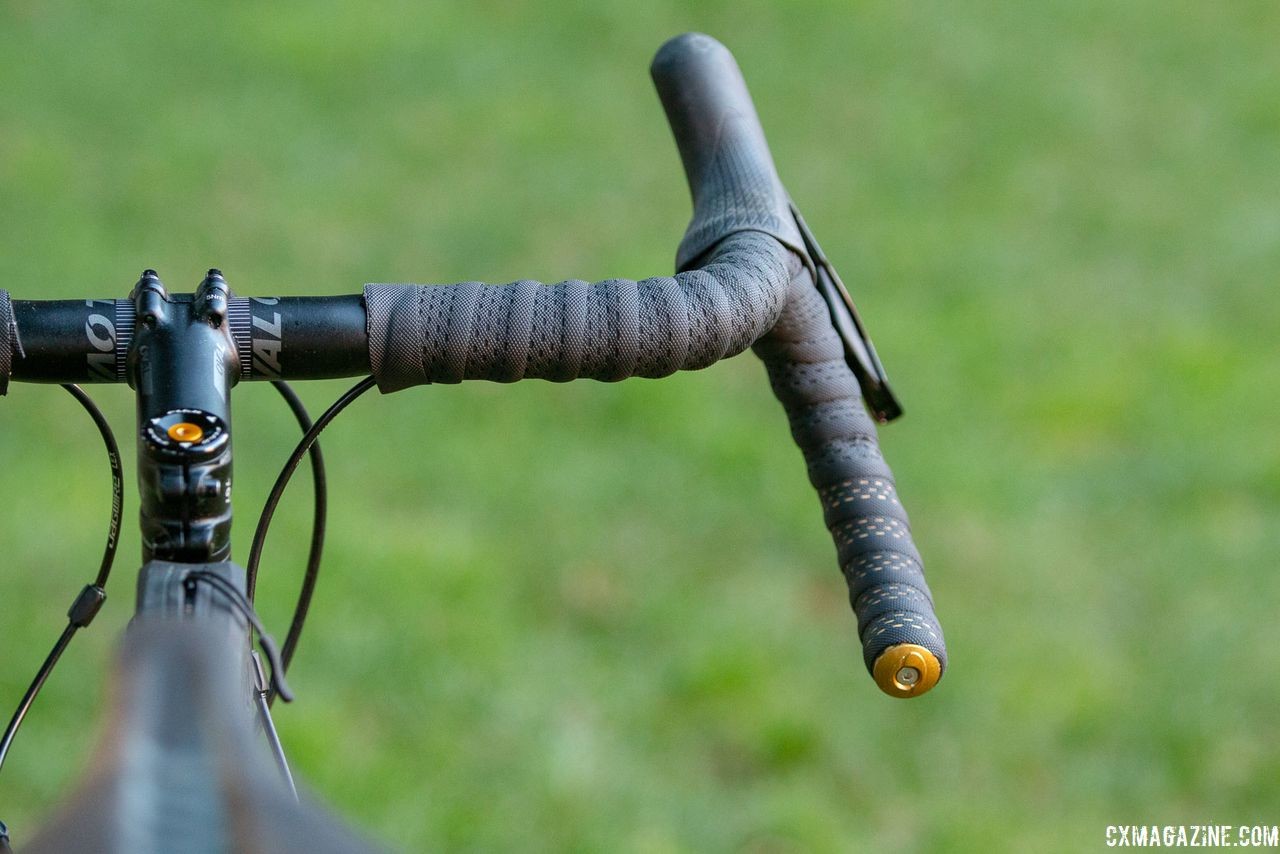
The Oval Concepts bar is aggressively flared. 2019 Fuji Jari Carbon 1.1 Gravel bike. © Cyclocross Magazine
The handlebar came wrapped in stylish and grippy perforated two-tone black and gold bar tape and was capped off with gold-anodized bar plugs, continuing the color theme of the bike. The Oval Concepts 925 seat post is our preferred two-bolt style, and the saddle was an Oval Concepts x38 model.
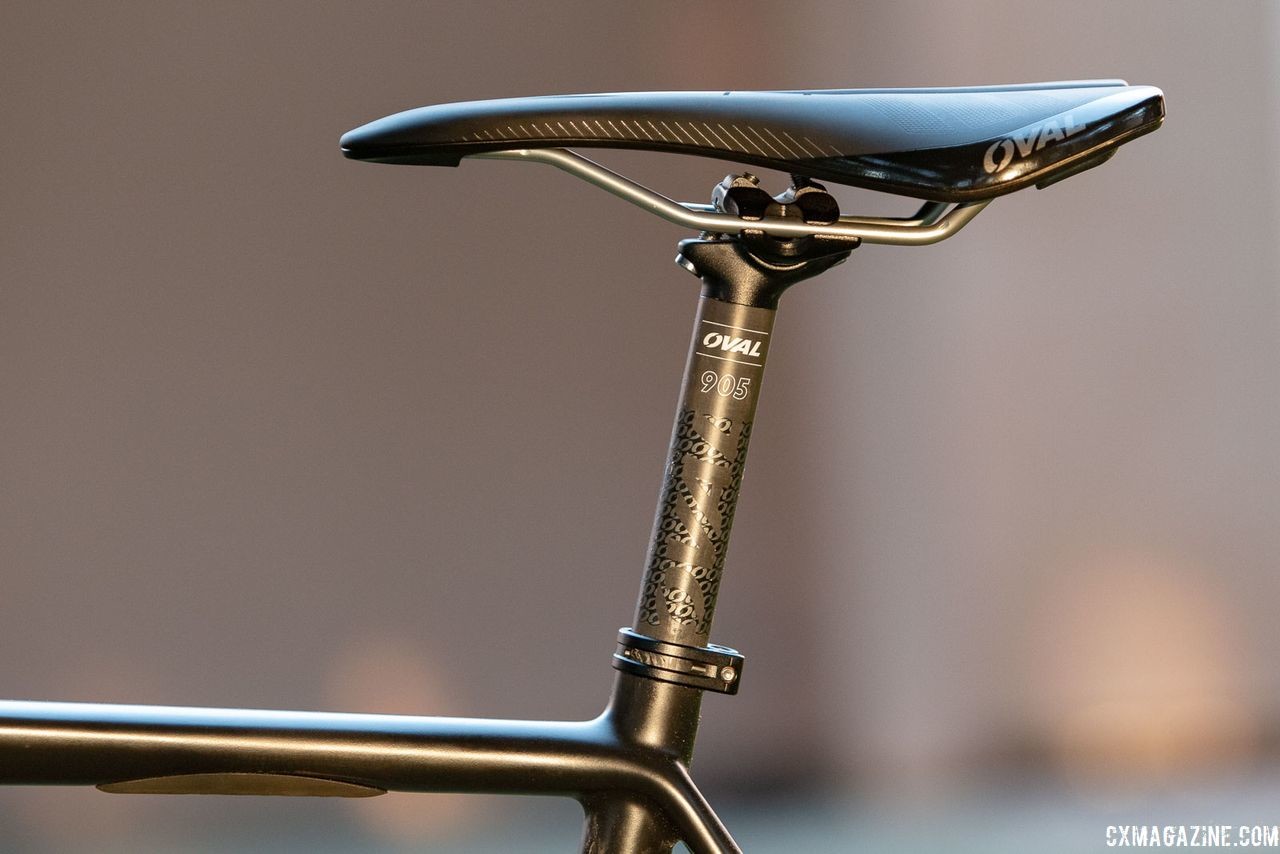
The Jari Carbon 1.1 includes a carbon Oval Concepts seatpost. 2019 Fuji Jari Carbon 1.1 Gravel bike. © Cyclocross Magazine
Keeping with the adventure theme, the Jari Carbon 1.1 comes with a Bento box-style bag mounted to the top tube bosses. Underneath the top tube, there’s a silicone pad for shouldering, which we didn’t feel was really in the right spot for a full-on run-up, but is appreciated nonetheless.
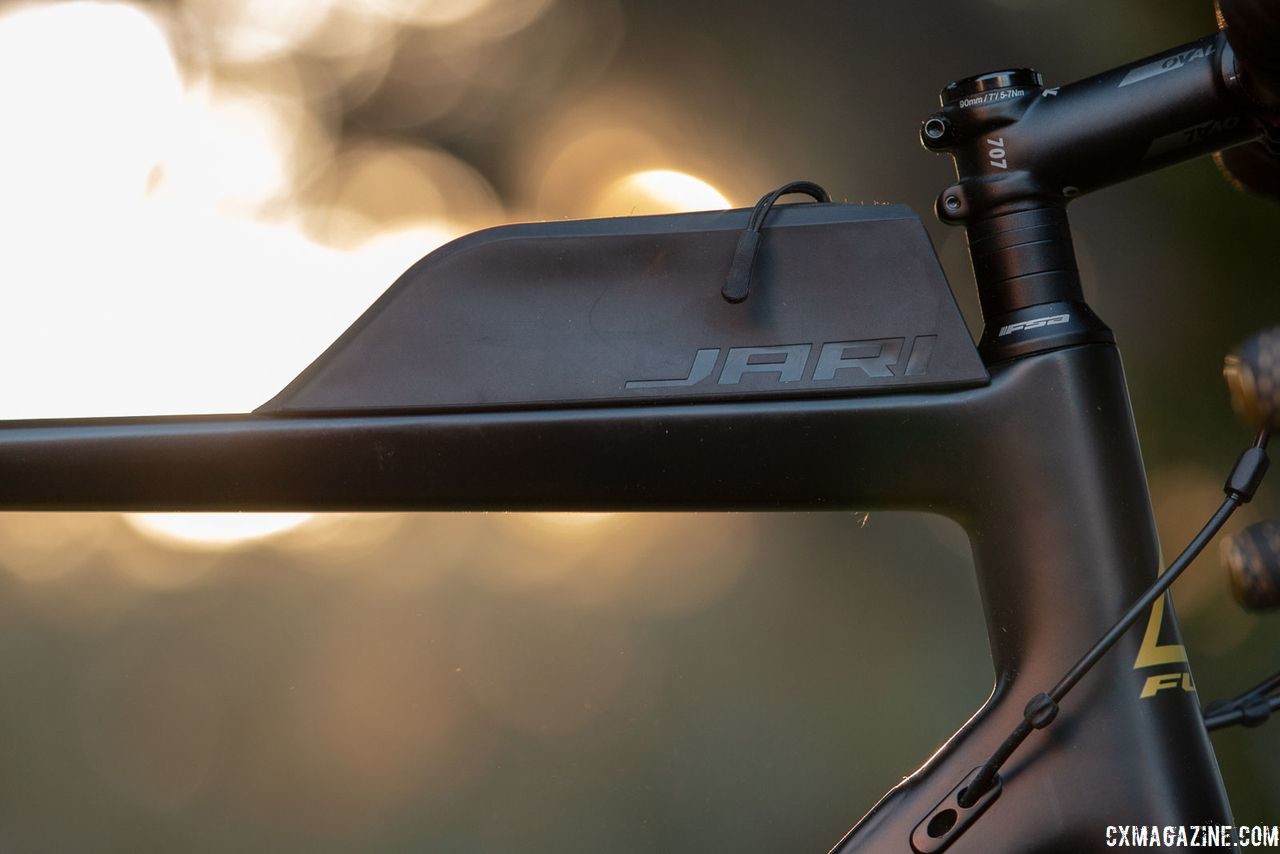
Unlike the alloy and steel frames, the Jari carbon ships with a custom zippered Bento box for storage. 2019 Fuji Jari Carbon 1.1 Gravel bike. © Cyclocross Magazine
Another adventure-oriented addition is a thick silicone frame protector on the underside of the down tube.
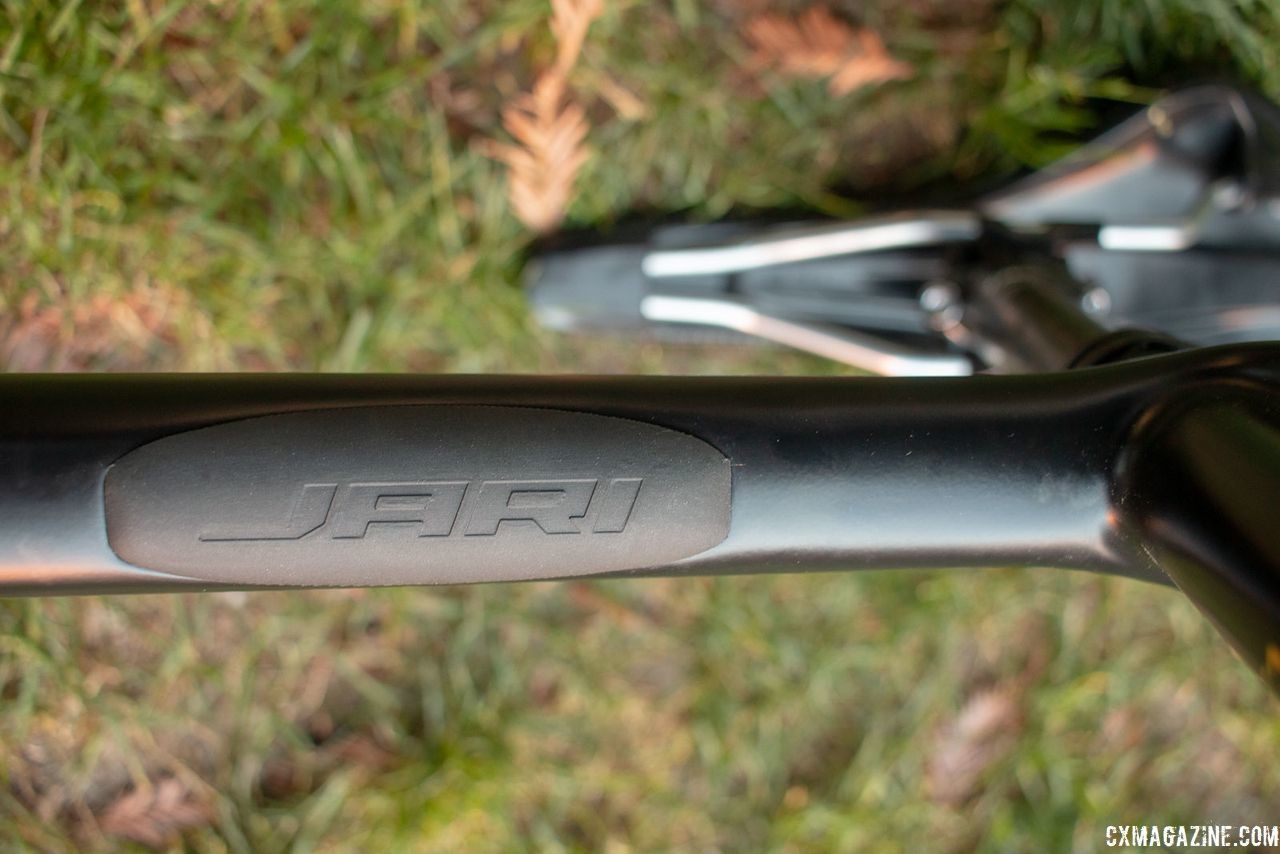
The Jari carbon includes a pad for more comfortable bike portage. 2019 Fuji Jari Carbon 1.1 Gravel bike. © Cyclocross Magazine
The bike has a claimed weight of 18.5lbs. Our complete size large build weighed just a hair over 20lbs, tubeless. Without wheels but with thru-axles, the bike weighs 12.6lbs.
The Ride
Despite Fuji’s clear delineation between its pair of cyclocross bikes and its gravel-focused Jari line, the Jari Carbon 1.1 rides like a ’cross bike. Which is to say, it felt immediately familiar on local trails.
I felt that the steering was a tiny bit vague on the road at first but chalked it up to the Panaracer GravelKing SK tires and perhaps the slightly rearward weight distribution on this bike compared to what I’m used to.
Once I got onto the dirt, I felt right at home on the Jari Carbon 1.1, taking it up and down the typical (and some not-typical) test trails. I typically ride a cyclocross bike year-round on all types of terrain and prefer a taller headtube and lower bottom bracket. Much to my surprise, the Jari felt like a cyclocross bike with wide tires.
Any sort of slowness in handling due to the longer chainstays was imperceptible on road and trail use, as there weren’t any taped-in turnarounds to navigate. While it’s not sold for cyclocross, this one might be particularly well-suited to the mud and ruts, given that it really behaves like a cyclocross bike and has mud clearance to spare
Both the curved seatstays and flattened chainstays are designed to provide suspension in the rear triangle. I could not detect any noticeable flex, but I did not necessarily grind out 100 miles on gravel roads, where it might come in handy.
Although I had to return the Jari Carbon 1.1 before the long miles of next month’s Lost and Found Gravel Grinder, the bike has a comfortable feel, and I would have no qualms riding it for that event or farther.
The Panaracer GravelKing SK TLR tires were a nice tire choice, considering that they’re relatively high-volume and tubeless-ready right out of the box. While nobody would ever confuse them with a true mud tire, they did better than expected during several unexpectedly muddy weeknight rids.
Some credit here might go to the geometry and gearing, which let us stay seated with all of our considerable off-season weight over the rear tire. But most of the credit goes to Panaracer’s engineers, who have been tinkering with the tread pattern, casing, colors (and name) of their ever-evolving GravelKing lineup for years.
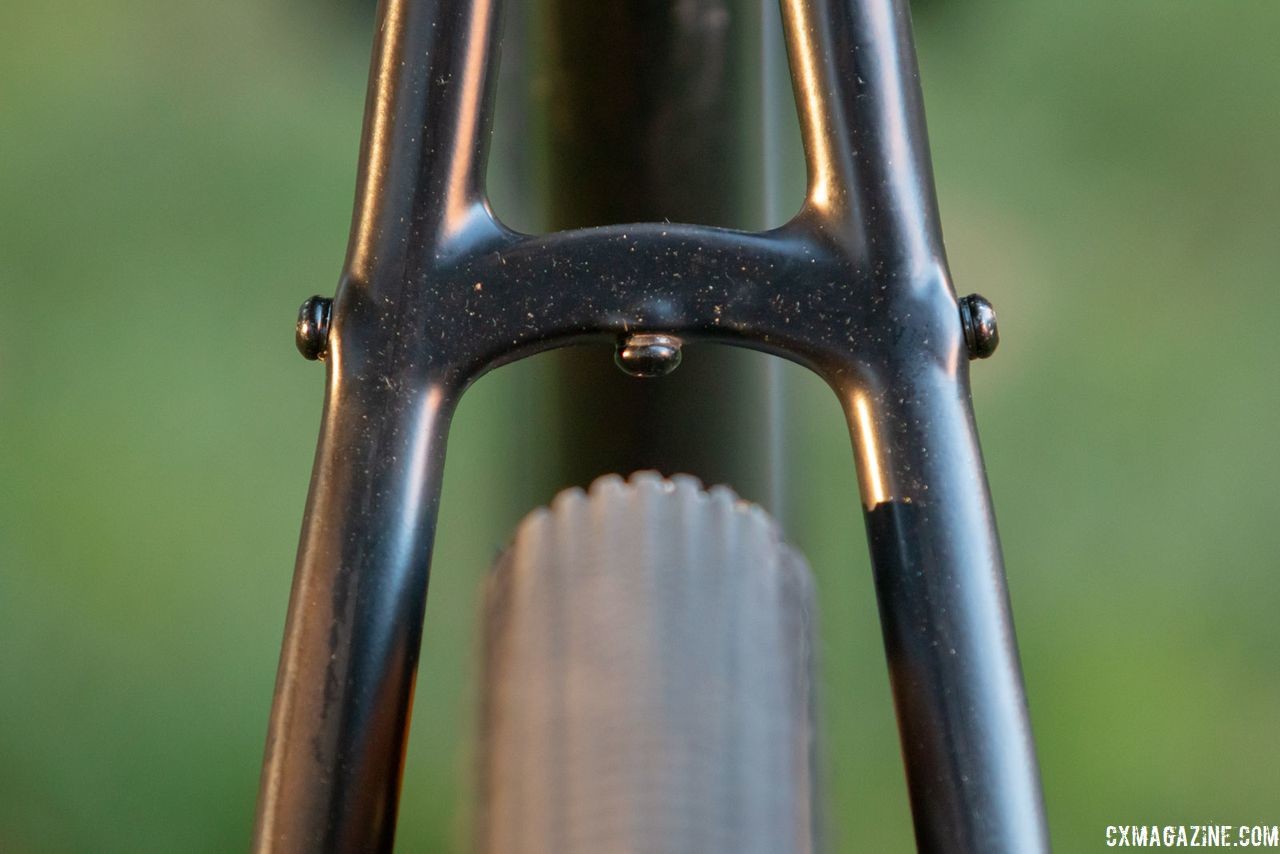
While seatstay bridges to present a surface on which mud may accumulate, they also allow for easier mounting of a fender. 2019 Fuji Jari Carbon 1.1 Gravel bike. © Cyclocross Magazine
On pavement, the GravelKings rolled quickly, and were remarkably predictable when leaning the bike over, due to the consistently-sized, tightly-spaced tread blocks. After riding them on the Jari, I might pick up a set for my own bike.
The WTB KOM Light i23 wheels are designed for easy tubeless setup and paired easily with the GravelKings. I appreciated the wider 23mm internal rims knowing the bike is designed for wide tires.
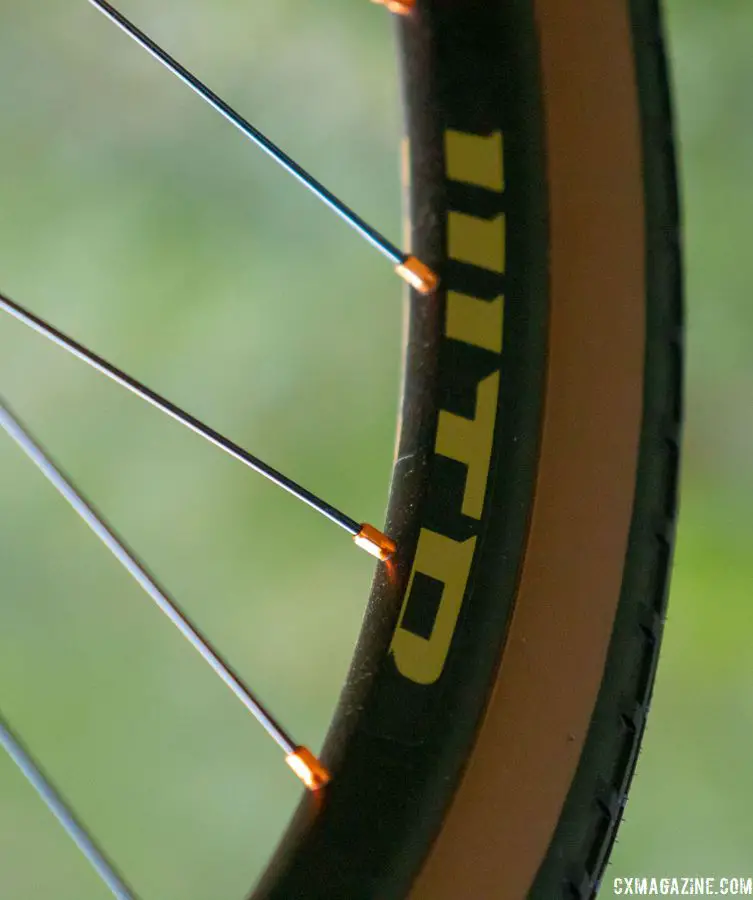
Details matter. Fuji equipped the Jari Carbon with gold spoke nipples. 2019 Fuji Jari Carbon 1.1 Gravel bike. © Cyclocross Magazine
As hinted above, the adventure chain ring combo and relatively wide 11-34t cassette were a good fit for gravel riding. The 46t big ring provided enough gear for hammering, and the package felt more versatile for both road and dirt rides than a typical 1x setup with a 38 to 42t front ring.
When riding got hilly, being able to drop down to the closely spaced low gears allowed me to stay seated more frequently than I would be able to with a compact road or 1x drivetrain. I can see this being a luxury when riding the Jari Carbon 1.1 loaded down with gear.
Speaking of spots to mount stuff, the large front triangle of the Jari Carbon 1.1 should provide ample room for partial or full frame bags, and the rest of the frame has plenty of spots to attach bottle cages. There is room for three on the inside of the front triangle, one underneath the down tube and one on each fork blade. There are also fender mounts front and rear, making it an option for bikepacking as well as your more traditional one-day gravel grind.
One mounted item I was less than thrilled with was the included Bento box bag. While it attracted plenty of attention and looked well-executed, I could not find a good use for it. It was barely tall enough to hold an energy bar, let alone a phone or camera. While it might be aimed at riders packing compact gels, it does not seem very functional for people who prefer solid food. At the same time, it was not low-profile enough to avoid being hit by my knees and legs when the riding got steep and sketchy.
Finally, riding gravel across the country can get pretty sketchy, so it was nice knowing the silicone pad was under the down tube when rocks and stones started flying around. It was a nice application of mountain bike innovation to the gravel/adventure discipline.
The Verdict
While many of us have a few (or more) bikes in the stable, we’re not looking for bikes that unnecessarily limit us. So when adding a new bike we ask ourselves what it will do for us.
This bike provides all the utility that our older ’cross bikes did, back when fender and rack eyelets were the norm. But it does so while also having a totally modern and lightweight frame and providing clearance for the wider tires that are en vogue for bikes we ride all year round.
While there are other gravel and adventure bikes that push the boundaries further, geometry-wise, the Jari stays pretty true to what we look for even in a regular cyclocross race frame. So it feels familiar, while still fitting larger tires and containing more braze-ons and space to carry gear than the typical “race” bike does.
With a great build on a frame with predictable handling and a bit of style in the finishing kit, I was sad to say goodbye to the Jari Carbon 1.1 when it was time to return it to the company.
The Jari Carbon 1.1, at $3k, seems like a decent value for an Ultegra RX800 bike, decent WTB wheels, tubeless-ready Panaracer rubber, and some nice aesthetic details. At this price level, many competitors offer SRAM Rival 1, Apex 1 or Shimano 105 drivetrains.
It’s worth noting that Fuji also has a Jari Carbon 1.3 coming, with Rival 1 for $2599. You’ll save $400, and get 11 fewer gears. You’ll have to be the judge as to whether that’s a good tradeoff.
Not sure if this is the right bike for you? You’ve got time to mull that decision over. Both models of the Fuji Jari Carbon won’t be out until late summer.
For more on the Fuji Jari Carbon 1.1, see the specs and photo gallery below.
Fuji Jari Carbon 1.1 Gravel/Adventure Bike Specs:
MSRP: $2999
Frame: Fuji C15 one-piece carbon, flat mount, 12mm thru-axle
Fork: FC-440 Cross carbon monocoque, flat mount, 12mm thru-axle
Front Derailleur: Shimano Ultegra FD-R8000
Rear Derailleur: Shimano Ultegra RD-RX800
Crankset: FSA Energy Modular, 46/30t chain rings
Cassette: Shimano Ultegra, 11-34t
Shift/Brake Levers: Shimano Ultegra R8000 STI hydraulic disc
Brakes: Shimano Ultegra hydraulic disc, flat mount
Rotors: Shimano Ice Tech Freeza, 160mm
Wheelset: WTB KOM Light i23, alloy
Tires: Panaracer GravelKing SK TLC, 700c x 43mm, tubeless-ready, tubes installed
Handlebar: Oval Concepts 325 flared drop
Seat Post: Oval Concepts 925
Saddle: Oval Concepts x38
Others: Top tube bento box, shouldering pad
Photo Gallery: Fuji Jari Carbon 1.1 Gravel/Adventure Bike

